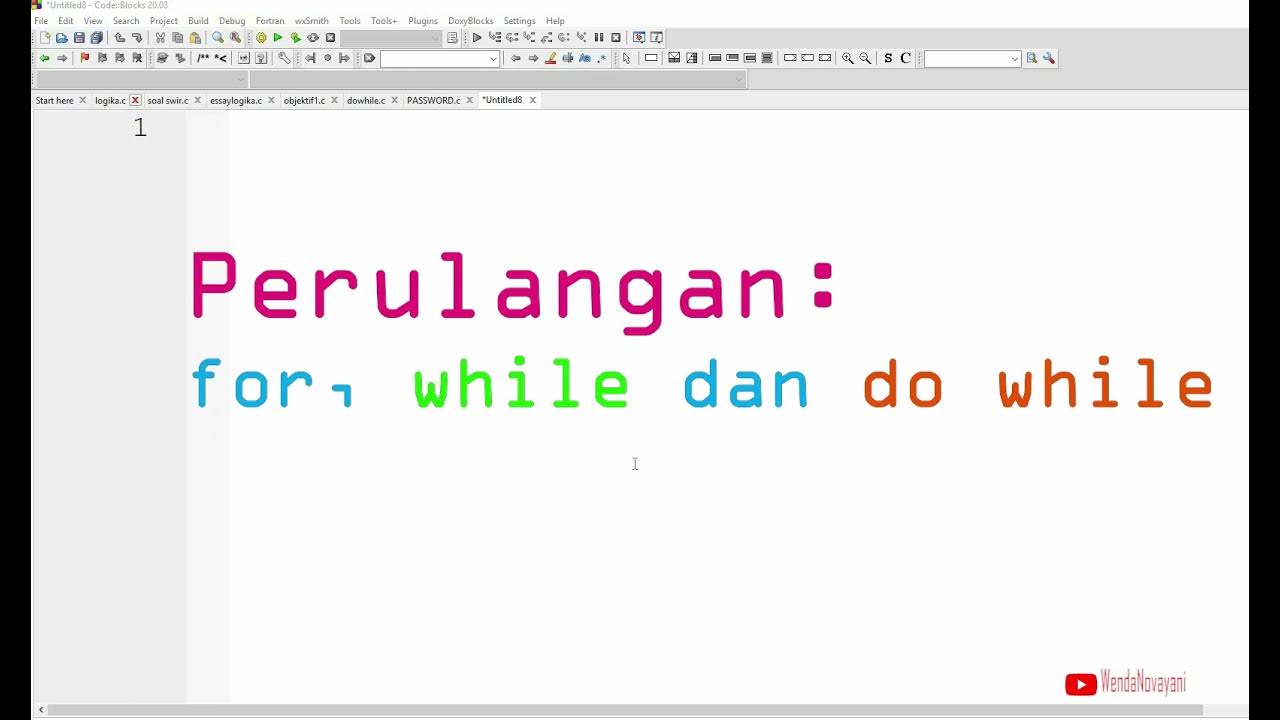for loops with range() | Intro to CS - Python | Khan Academy
Summary
TLDRThe video explains the use of for loops as an efficient alternative to counter-based while loops in programming. It highlights how for loops simplify the process by managing initialization and updates to the loop variable automatically, using Python's range function to define the start and stop values. The tutorial also clarifies the distinction between for loops and while loops, emphasizing that while loops are necessary for conditions that depend on unpredictable factors, while for loops are ideal for scenarios with a predetermined number of iterations.
Takeaways
- 😀 Standard while loops require initialization and update statements for loop variables.
- 😀 Counter-based loops can be more efficiently written as for loops.
- 😀 A for loop begins with the keyword 'for', followed by the loop variable and the range function.
- 😀 The range function defines the stop value for the loop, indicating when to terminate the loop.
- 😀 In for loops, the loop variable is automatically initialized and updated, simplifying the code.
- 😀 The range function generates values starting from 0 (default) to a specified stop value (exclusive).
- 😀 During each iteration of a for loop, the loop variable takes on the next value in the range.
- 😀 For loops are ideal for repeating code a fixed number of times, as they streamline variable assignment.
- 😀 While loops are necessary when the number of iterations is not predetermined or depends on dynamic conditions.
- 😀 Understanding when to use for vs. while loops can optimize coding efficiency and clarity.
Q & A
What is the primary purpose of using a for loop instead of a while loop?
-For loops are simpler for counter-based repetition because they combine the initialization and update of the loop variable into a single line of code.
How does the range function work in a for loop?
-The range function generates a sequence of numbers, starting from a default value of 0 and stopping before the specified stop value, making it easy to iterate over.
What is the significance of the start and stop values in the range function?
-The start value is inclusive, while the stop value is exclusive, meaning the loop will include the start value but not the stop value in its iterations.
Why might someone choose to use a while loop instead of a for loop?
-While loops are better suited for situations where the number of iterations is not predetermined, such as when waiting for user input or dealing with randomness.
Can all for loops be rewritten as while loops?
-Yes, all for loops can be expressed as while loops, but not all while loops can be effectively converted to for loops.
What happens when a for loop reaches the end of its range?
-When a for loop reaches the end of its range, it terminates, skipping any remaining code in the loop body and moving to the next line of code outside the loop.
What is the default starting value for a for loop if none is specified in the range function?
-If no starting value is specified in the range function, the default starting value is 0.
How does a for loop manage the loop variable compared to a while loop?
-In a for loop, the management of the loop variable—initialization and updating—is handled automatically by the loop structure, unlike a while loop where the programmer must do this manually.
What is an example of a situation where a while loop is preferable to a for loop?
-A while loop is preferable when the number of iterations depends on a condition that may change unpredictably, such as waiting for user input or processing data until a certain state is reached.
What is the effect of including a start value in the range function?
-Including a start value in the range function allows the loop variable to begin at a specified number, rather than the default of 0, enabling greater flexibility in defining loop behavior.
Outlines

Cette section est réservée aux utilisateurs payants. Améliorez votre compte pour accéder à cette section.
Améliorer maintenantMindmap

Cette section est réservée aux utilisateurs payants. Améliorez votre compte pour accéder à cette section.
Améliorer maintenantKeywords

Cette section est réservée aux utilisateurs payants. Améliorez votre compte pour accéder à cette section.
Améliorer maintenantHighlights

Cette section est réservée aux utilisateurs payants. Améliorez votre compte pour accéder à cette section.
Améliorer maintenantTranscripts

Cette section est réservée aux utilisateurs payants. Améliorez votre compte pour accéder à cette section.
Améliorer maintenant5.0 / 5 (0 votes)






